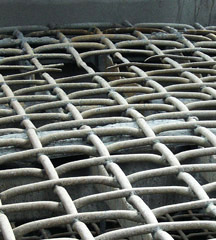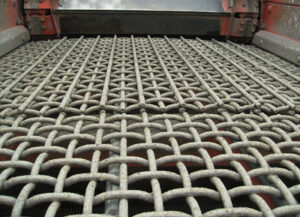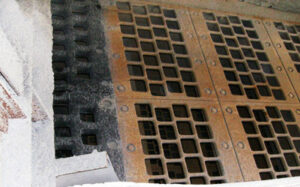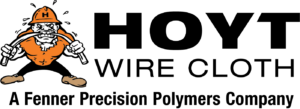The Impact of “Impact” Wear
 Transporting, crushing, conveying and the screening aspects of all aggregate processing facilities deal with localized and, in many cases, severe wear areas. Areas of aggregate impact upon processing components can create unusually rapid wear where aggregate is transferred from one point to another in the processing flow. Depending upon the “transfer mode” and the impact media in use, the “impact of impact” can be minimized. Other than aggregate conveying, two specific “modes” of aggregate transfer are involved in almost all aggregate processing plants. This is either an “impact” transfer or a “sliding” transfer mode. Both of these “modes” of material transfer can result in an unusually high rate of wear to the transfer media’s surface, although, believe it or not, correct impact applications can be beneficial — both in transferring and in efficient aggregate screening. The following information addresses the effects of aggregate impact upon screening and material transfer surfaces.
Transporting, crushing, conveying and the screening aspects of all aggregate processing facilities deal with localized and, in many cases, severe wear areas. Areas of aggregate impact upon processing components can create unusually rapid wear where aggregate is transferred from one point to another in the processing flow. Depending upon the “transfer mode” and the impact media in use, the “impact of impact” can be minimized. Other than aggregate conveying, two specific “modes” of aggregate transfer are involved in almost all aggregate processing plants. This is either an “impact” transfer or a “sliding” transfer mode. Both of these “modes” of material transfer can result in an unusually high rate of wear to the transfer media’s surface, although, believe it or not, correct impact applications can be beneficial — both in transferring and in efficient aggregate screening. The following information addresses the effects of aggregate impact upon screening and material transfer surfaces.
Install a “Rock on Rock Feed Box”

This is especially beneficial when scalping screens are utilized in the primary circuit. Larger aggregate impacts other aggregate material instead of causing localized and, in many cases, severe wear of the feed box and screen media. Additionally, the material discharge from the feed box onto the feed screen panel should not exceed >8 inches. This will significantly increase the wear-life of the screen media by “laying” material onto the screen surface versus being “thrown” on. (See above right photo.)
Discharge chutes are other applications where this “rock on rock” remedy is very beneficial. Installation of “material holding steps” on discharge chutes essentially traps the aggregate that passes over. This then becomes an effective non-wearing solution to an otherwise severe impact and wear area.
Discharge Chute
The angle of impact is important. This is an especially important consideration when material is transferred from point to point in the aggregate flow. Striking the wearing surface at a 90 degree angle will reduce rapid wear significantly. Conversely, aggregate material which impacts wear areas at a lesser angle increases the rate of wear dramatically. This “glancing” impact rapidly abrades the wearing surfaces of all impact points.
Put Hoyt Guard Rods on Duty
 On scalping decks where this severe wear occurs, Hoyt recommends the use of “Guard Rods” to effectively transfer the larger aggregate down the screen deck. The guard rods are positioned on the feed panel, under the impact area and parallel to the material flow. Guard rods essentially act as an impact pad. They offer increased screening area and no loss of open area as shown below.
On scalping decks where this severe wear occurs, Hoyt recommends the use of “Guard Rods” to effectively transfer the larger aggregate down the screen deck. The guard rods are positioned on the feed panel, under the impact area and parallel to the material flow. Guard rods essentially act as an impact pad. They offer increased screening area and no loss of open area as shown below.
Hoyt Guard Rods
 Other alternatives are available. Numerous other screen media, aside from wire cloth, are currently available. These include perforated plate (AR 400 +), polyurethane and rubber screen surfaces. In many screening applications these particular screen media provide the best alternatives for reducing wear and increasing production.
Other alternatives are available. Numerous other screen media, aside from wire cloth, are currently available. These include perforated plate (AR 400 +), polyurethane and rubber screen surfaces. In many screening applications these particular screen media provide the best alternatives for reducing wear and increasing production.

